- Subscriber Services
- For Authors
- Publications
- Archaeology
- Art & Architecture
- Bilingual dictionaries
- Classical studies
- Encyclopedias
- English Dictionaries and Thesauri
- Language reference
- Linguistics
- Media studies
- Medicine and health
- Names studies
- Performing arts
- Science and technology
- Social sciences
- Society and culture
- Overview Pages
- Subject Reference
- English Dictionaries
- Bilingual Dictionaries

Recently viewed (0)
- Save Search
- Share This Facebook LinkedIn Twitter
Related Content
Presentation drawing, quick reference.
A term coined in the 20th century by the Hungarian art historian Johannes Wilde to describe certain drawings made by Michelangelo, for example those he gave as presents to various aristocratic young men. Presentation drawings were finished, non-utilitarian works of art, as opposed to preparatory drawings for a work in another medium. The earliest known presentation drawings dating from the Italian Renaissance are two drawings of the 1420s by Lorenzo Monaco.
From: presentation drawing in The Concise Oxford Dictionary of Art Terms »
Related content in Oxford Reference
Reference entries.
View all related items in Oxford Reference »
Search for: 'presentation drawing' in Oxford Reference »
- Oxford University Press
PRINTED FROM OXFORD REFERENCE (www.oxfordreference.com). (c) Copyright Oxford University Press, 2023. All Rights Reserved. Under the terms of the licence agreement, an individual user may print out a PDF of a single entry from a reference work in OR for personal use (for details see Privacy Policy and Legal Notice ).
date: 23 December 2024
- Cookie Policy
- Privacy Policy
- Legal Notice
- Accessibility
- [66.249.64.20|81.177.182.154]
- 81.177.182.154
Character limit 500 /500
History of Drawing
A Brief History of Drawing with a Focus on the Renaissance, Baroque and Modern Masters
- Drawing is a form of visual art that makes use of any number of drawing instruments to mark a two-dimensional medium.
- An artist who practices or works in drawing may be called a draughtsman or draftsman.
Drawing: A Quick History
- Sketches and paintings have been produced since prehistoric times, as shown by cave and rock paintings.
- By the 12th to 13th centuries B.C., monks were preparing illuminated manuscripts on vellum and parchment in monasteries throughout Europe and were using lead styli (plural of stylus – a pointy drawing thingy) to draw lines for their writings and for the outlines for their illuminations.
- Soon artists were using silver to make drawings and underdrawings. Initially they used and re-used wooden tablets that were primed for these drawings.
- When paper became more available, from the 14th century on, artists' drawings, both studies and finished works, became common.
Our First Marks
Drawings were used to record ceremonial events and rituals
Drawings of dancing and hunting men and women from the Mulgura caves near Bulgaria. From various periods from Neolithic to the Bronze Age. (12,000 to 5,000 years ago)
Cave drawings from Lascaux, France from 15,000 years ago (Paleolithic era). Used as part of a ‘pep-rally’ type ritual to prepare for the hunt.
*both used natural materials; charcoal, ochre, animal fat
Clay Tablets
The Ancient world: Syria and Eqypt
Clay Tablets con’t
This is the Disc of Phaistos. It is Minoan (from the Island of Crete, Greece) from the 2 nd millenium B.C.E. It is two sided and has images stamped on it in a spiral sectioned into small portions, each signifying a concept. It has not yet been transferred.
**All these early tablet drawings are used to record history, law and sacred myths.
Illumination
This is the Book of Hours of Jeanne d'Evreux: Arrest of Jesus and Annunciation. It is from 1325 C.E. It would have hand drawn images done in lead or silver by stylus down by a monk. The support is vellum, not paper.
This is a page from the very famous “Book of Kells”. It too is an illuminated manuscript (a book or volume, one of a kind, created by monks, filled with elaborately decorated letters and drawings to illustrate religious texts). It would have been created by Celtic monks (modern day Ireland/Scotland) in 800 C.E. It is very lushly decorated and recounts biblical tales in Latin through drawings and text. Vellum, again!
- Thank you, China! 2 nd century C.E. saw the invention of paper but it wasn’t widely available to Europe until the 13 th century or so.
- It was dramatically cheaper than vellum, easier to work than clay and it accepted a greater variety of media.
Renaissance + Paper
- With plentiful paper, artists used drawing as a preparatory or study medium such as those done at autopsies to learn the human form.
Leonardo Da Vinci, The Principal Organs and Vascular and Urino-Genital Systems of a Woman, c. 1507
Da Vinci: Italian Renaissance
Vitruvian Man (a.k.a. The Proportions of Man),1487,Pen and ink with wash over metalpoint on paper , 34.4 × 25.5 cm (13.5 × 10.0 in)
The Renaissance revisited the perfection and glory of Ancient Greek and Roman beauty. This work measures human perfection in proportions
Drawings = Preparation
Head of a girl �LEONARDO DA VINCI�Date :c. 1483�Technique :Silverpoint & white highlights on prepared paper, 181 x 159 mm
Da Vinci was a keen and well-trained observer. He began training as a boy & would have done many, many drawings. Note the direction of the hatching: he’s left-handed. It is surprisingly loose & gestural compared to his paintings.
Durer:Northern Renaissance
Durer loved animals and he made many drawings and watercolour of them. This is perhaps his most famous animal drawing which he then coloured with watercolours and probably other water pigments (gouache-like). Durer drew it from real life from a model kept in a locked room.
Michaelangelo: Just a Sculptor?
Study for Adam (Sistine Chapel Ceiling) Red chalk, 19,3 x 25,9 cm, 1510
Michaelangelo considered himself a sculptor and often did not enjoy drawing or painting or proclaimed to be excellent at them. He work is masterful in its use of line and value to show form. Even the simplest contour line evokes the third dimension and elegant movement
Rembrandt: Dutch Baroque
It is a quick drawing done in an oriental calligraphy style, using just a few strokes. The drawing is done with brush and uses little lines and shape to create the figure. The figure becomes apparent though the variation of the size the lines and shapes. It’s a simple but beautiful drawing the shows how a quick gesture can capture a realistic positioning and weightiness of the figure. The subject is his common-law wife.
Young Woman Sleeping, Rembrandt, 1654, ink wash on paper.
Claude Lorrain: French Baroque
Claude Lorrain Landscape with a Bridge , c. 1630/1635�pen and brown ink with brown wash over black chalk on laid paper: 20.5 x 26.9 cm
French born but lived in Rome. His paintings were painstakingly wrought but his drawings were free & loose. They weren’t meant to be exhibited. They were only preparation for final paintings. His true passion was for landscape (pastoral scenes). Often they featured mythological allegories. He used value to show depth & light.
Fast Forward: Modernism
Woman Sleeping, Picasso, 1952
In the last 100 years, drawings have started to be considered finished works, not just disposable preparation for ‘greater’ painted work. Picasso made many drawings, some were studies but many were works unto themselves. His work varies from rough and gestural to simple and contour-driven. He often blended his points of view into a singular image.
Georgia O’Keefe: American Modernism
O’Keefe’s work, whether drawn or painted, sit happily on the border between reality and abstraction, nature and fantasy. Her lines are bold, sensual and undulating. The value is subtle and graded.
audio guide extract
Egon Schiele
Austrian expressionist artist Egon Leo Adolf Schiele , b. June 12, 1890, d. Oct. 31, 1918, was at odds with art critics and society for most of his brief life. His treatment of the nude figure suggests a lonely, tormented spirit haunted rather than fulfilled by sexuality. He was very influenced by Gustav Klimt but made his lines more from psychological of spiritual instincts than aesthetically driven.
His lines are jagged, tortured, tense and well ahead of his time. He wanted inner truth more than outer realism.
Sitting Woman with Legs Drawn Up �1917, oil on canvas
Overview of Drawing
Drawing started as a record of ritual, became a record of laws and history. It grew into a way to study what the artist saw before he/she painted a polished masterpiece. It then became expressive gestures and lines with psychological tension and meaning.
Drawing Materials
Graphite pencil
Pen and ink
Silver Point
Colour pencils
Composition: Applying the Elements and Principles of Design Successfully.
Line Proportion
Texture Balance
Colour Movement
Shape Pattern
Value Unity
Form Emphasis
Space Contrast
Research: Artist that Inspires You?
Which drawing materials and surfaces best represent your ideas and/or subject? Planning sheet due today!
Which of the artists from the Renaissance, Baroque, Modernism and beyond interests you? Questions on artist Due Oct. 5
Rubric for Project due Oct 9
Academia.edu no longer supports Internet Explorer.
To browse Academia.edu and the wider internet faster and more securely, please take a few seconds to upgrade your browser .
Enter the email address you signed up with and we'll email you a reset link.
- We're Hiring!
- Help Center

Download Free PDF
Chapter 41 Presentation Drawings

Related papers
Name of the design firm doing the job. This should be in a larger, bolder text and include a logo if possible and address, telephone, web address, e-mail, etc. Name of the major design consultants. List civil, structural, mechanical, electrical engineers and other consultants. Include contact information. Space for professional stamp or seal. Depending upon the type and scope of the project, this may be required.
Revue des Questions Scientifiques, vol.193, n°1-2, 2022
Une interprétation de la physique quantique est un système de propositions philosophiques (ontologiques) qui cherche à expliquer les phénomènes quantiques observés expérimentalement en décrivant la constitution de la matière au sens large, ainsi que ses propriétés. L’interprétation relationnelle en est une, qui est présentée ici sous un angle réaliste (en l’occurrence sans donner de statut physique particulier aux observateurs conscients) de manière à pouvoir être comprise par la majorité, et sans prérequis, c’est-à-dire en évitant d’utiliser le formalisme mathématique. Bien qu’on puisse la présenter simplement, elle soulève tout de même des questions qui seront brièvement traitées pour donner un aperçu des pistes de recherches dans ce domaine. * * * Interpretating quantum physics involves creating a system of philosophical (ontological) propositions that attempts to explain experimentally observed quantum phenomena by describing the composition of matter (in the broad sense of the term), as well as its properties. One of these is the relational interpretation, which is presented here from a purely realistic point of view (i.e., without granting any particular physical status to conscious observers) so as to be more widely understood, without the need for any prerequisite training, and thus excludes the use of mathematical formalism. Although presenting this interpretation is a fairly simple task, it still raises certain questions that will briefly be addressed in order to provide an overview of the various avenues of research in this field.
El Futuro del Pasado, 2024
Resumo: A taberna foi sempre espaço de sociabilidade, local de consumo de vinho e de petiscos, mas também de escândalo pois ali se jogava, se discutiam ideias e se aliciavam prostitutas, apresentando-se como um prolongamento da rua. A documentação dos Feitos findos, guardada no Arquivo Nacional da Torre do Tombo (Lisboa), oferece-nos um retrato da violência física e verbal envolvendo mulheres que exerciam as funções de taberneiras na Lisboa dos finais do Antigo Regime. Se algumas foram prevaricadoras, outras surgiram como vítimas. Foram estudados 18 casos situados entre 1805 e 1833. Palavras-chave: Mulheres; Portugal; Sociabilidade; Tabernas; Século xix. Abstract: The tavern has always been a space for sociability, a place where wine and also some food are consumed, but where people also played games, discuss ideas and entice prostitutes. The documentation of the Feitos Findos, kept in the Arquivo Nacional da Torre do Tombo (Lisbon), offers us a picture of the physical and verbal violence involving women who worked as tavern keeper in Lisbon at the end of the Ancien Regime. If some were prevaricators, others emerge as victims. We studied eighteen cases dated between 1805 and 1833.
Función de los gerentes que consiste en alcanzar las metas organizacionales en forma adecuada y eficiente, planeando, organizando, dirigiendo y controlando los recursos.
World Archaeology, 2022
Hacia una mejor calidad en nuestras escuelas, 2001
Artmagazin, 2023
FSM ilmî araştırmalar insan ve toplum bilimleri dergisi, 2022
Annals of WULS, Forestry and Wood Technology
Wolfgang Amadeus Mozart La flauta mágica: Un acercamiento a la música, la religión y al misterio de lo inefable, 2023
Journal of Sex & Marital Therapy, 2016
Jurnal Riset Pendidikan Guru Paud
Journal of Open Source Software, 2020
Hip Preservation Surgery, 2020
Ege Akademik Bakis (Ege Academic Review), 2017
SAPA - Jurnal Kateketik dan Pastoral
Ahi Evran Üniversitesi Sosyal Bilimler Enstitüsü Dergisi, 2021
Molecular and Cellular Biology, 1995
Biochemical Pharmacology, 2009
BAROMETR REGIONALNY, 2023
- We're Hiring!
- Help Center
- Find new research papers in:
- Health Sciences
- Earth Sciences
- Cognitive Science
- Mathematics
- Computer Science
- Academia ©2024

What Is Drawing? – The First Form of Visual Representation
This post may contain affiliate links. We may earn a small commission from purchases made through them, at no additional cost to you.
- share
- save
What is drawing, and how can this important visual art form benefit us? The art of drawing is one of the most fundamental art forms in visual art that involves creating visual representations. From a form of documentation to a form of artistic expression, drawing dates back to prehistoric times, when humans first used the art form as a tool for communication. In this article, we will explore the history of drawing, as well as the different types of drawings and their benefits. Keep reading for more about this diverse and dynamic art form and its relevance for us today!
Table of Contents
An Introduction to the Art of Drawing
What is drawing, and how has drawing progressed as an art form in history? The history of drawing dates back thousands of years ago and was rooted in the evolution of human civilization. Drawing was one of the first forms of mark-making in early prehistoric cultures that were used to mark cave walls and record the experiences and messages of early humans.
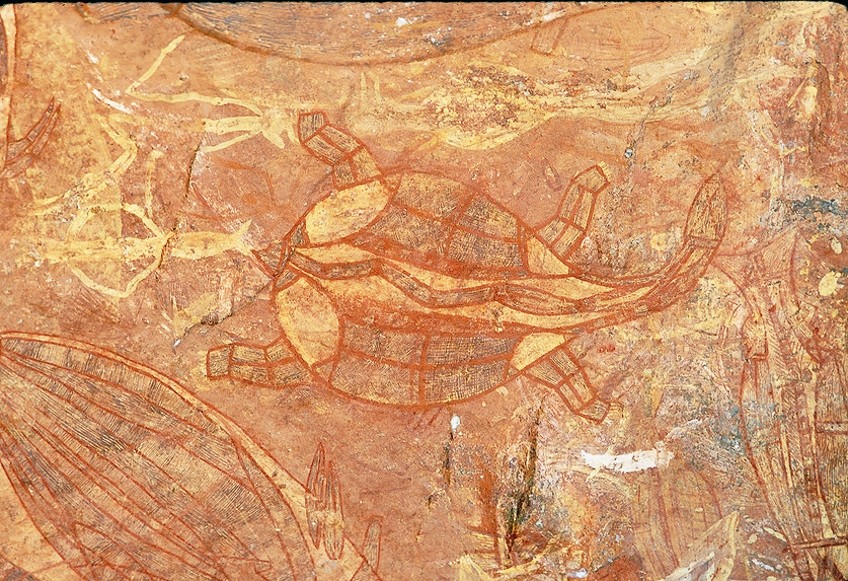
Since then, drawing has become a fundamental aspect of visual art that involves the creation of scenes, objects, and representations of different subjects using various marks such as lines and shapes on a surface. Master artists from all walks of life have adopted drawing as one of the first steps to discovering their artistic capabilities. Today, it remains a widely-practiced art form that offers endless possibilities, in conjunction with the advancements of technology, for innovative forms of self-expression.
A thorough drawing definition can be understood by reviewing the function of drawing in history. Many ancient civilizations across China, Mesopotamia, and Egypt saw drawing as a useful medium through which they could document religious rituals, and record historical events and scenes from daily life.
The ancient Egyptians developed hieroglyphics, an example, of which fused drawing and writing to produce a complex system of pictorial symbols and ideograms. The era of antiquities in Greek and Roman culture also leveraged drawing as a form of artistic training for artists to develop their skills. Drawing was thus used to create preliminary sketches and studies for much larger artworks. The proto-Renaissance and Medieval periods saw the use of illuminated manuscripts, which contained intricate drawings combined with text, presented as a beautifully illustrated publication for religious purposes. One can recall many Renaissance artists such as Michelangelo, Leonardo da Vinci, and Raphael, who used drawing as a tool to develop their techniques and skills in draftsmanship while producing new ways of studying the human form via perspective and elevated representations of human anatomy.
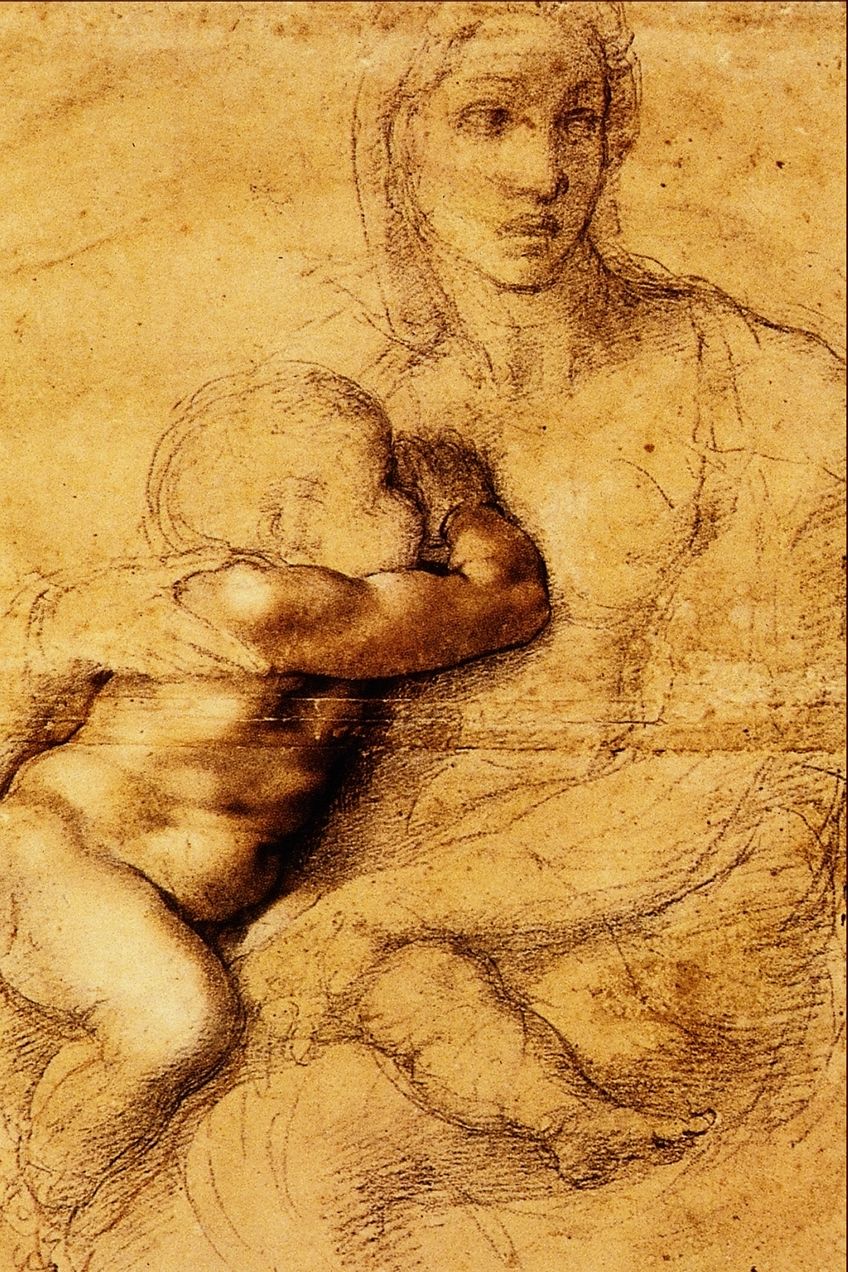
Throughout the 18th and 19th centuries, drawing continued to flourish and saw the emergence of many techniques and styles. From the Romantic era through to the Impressionist era, which embraced modern and emotionally-driven drawings, many artists were captured by the idea of creating spontaneous and quick sketches to capture the essence of a moment or emotion.
By the modern era, drawing definitions saw a shift in the possibilities for what could be considered a drawing, and therefore, an artwork. The 20th century witnessed a surge of innovative drawing methods and experiments through the works of Pablo Picasso, Wassily Kandinsky, and Henri Matisse, who all challenged the notions of traditional drawing techniques and explored non-representational forms. As such, drawing began to take on an abstract role, which was used to express the artist’s emotions while communicating the subliminal ideas of the artist’s subconscious, and everything in between.
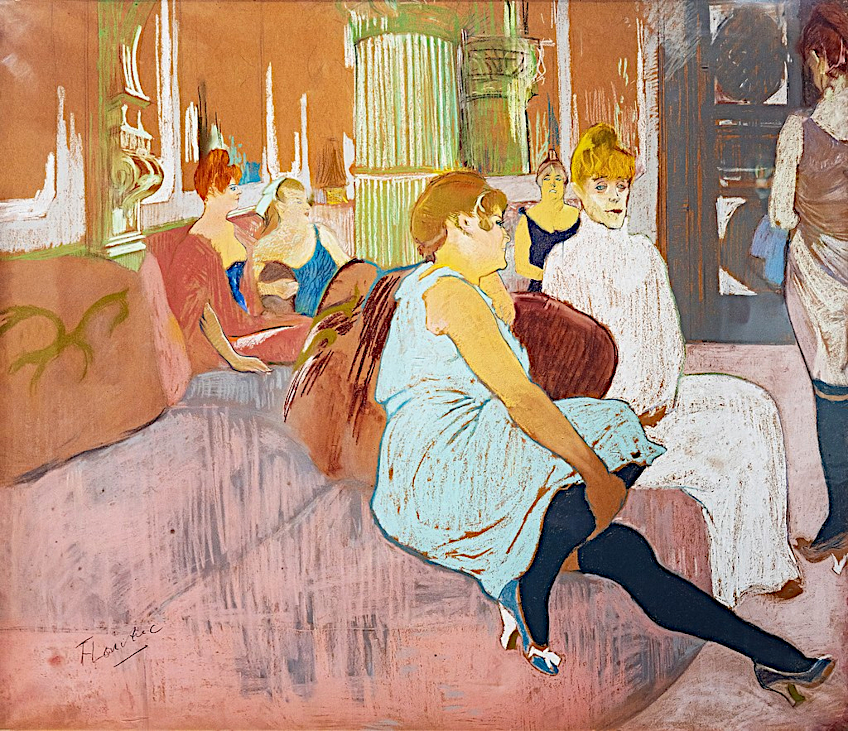
Below, we will explore all you need to know about drawing as a vital means of communication and artistic exploration. From pen and ink drawings to pastels, inks, charcoal, and graphite drawings, you can be sure that by the end of this article, you will have all the knowledge you need on drawing!
Understanding the Basics of Drawing
To grasp the principles of drawing, it is useful to understand the various elements that encompass the art form and how to practice it. It is useful to explore the various tools and materials needed to practice drawing since your material can vastly affect the texture, tone, and style of your artwork.
Tools and Materials in Drawing
A few basic tools and materials that you can use when drawing include graphite pencils, which are available in various levels of hardness, and are essential to creating different tones and lines in a drawing. One would also require drawing paper with a smooth or textured surface on which one can practice various media, including graphic pencils, ink, pastels, and charcoal. Many artist now even use digital media for drawing.
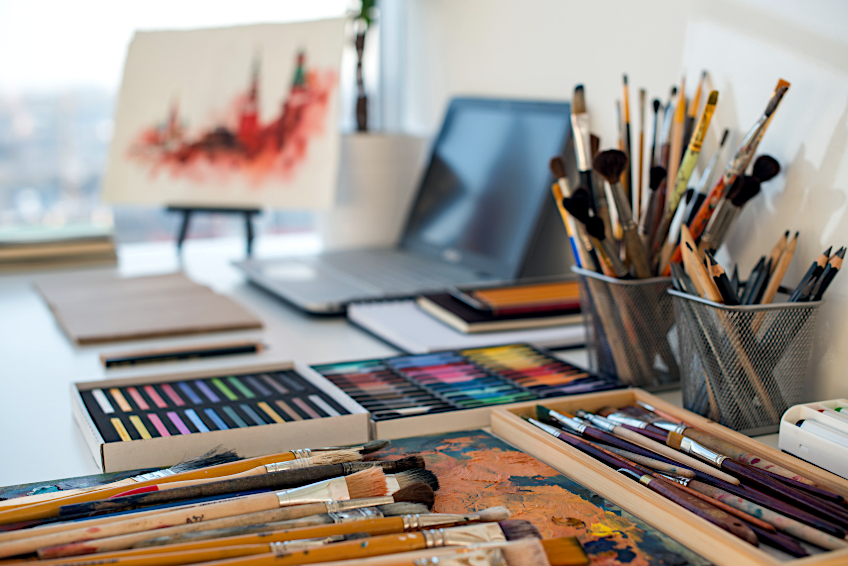
As a beginner, it is recommended that you purchase a multimedia drawing pad and a drawing board on which you can prevent your paper from shifting. A great medium for beginners to use when drawing is charcoal, which enables one to express their marks in a more textured and tonal way. Pen and ink drawings also offer more bold contrasts and crisp lines with more control than charcoal. Other great tools for drawing include colored pencils to add color for vibrant works and soft pastels which can be used to create a more painterly effect.
If you prefer greater control, it is recommended that you keep a ruler and a protractor on hand to create more accurate lines and angles and measure your subjects.
Blending stumps or tortillons are great tools used to smudge and blend graphite. If you are using charcoal, remember to purchase a fixative spray to protect your finished drawing from smearing or smudging. Additionally, one can also find a variety of pens on the market such as dip pens or fine liners to create more intricate and detailed artworks. Special art erasers also come in handy and include the kneaded eraser and soft eraser, which can be used to lift graphite, create highlights, or simply for light erasing on subtractive drawings.
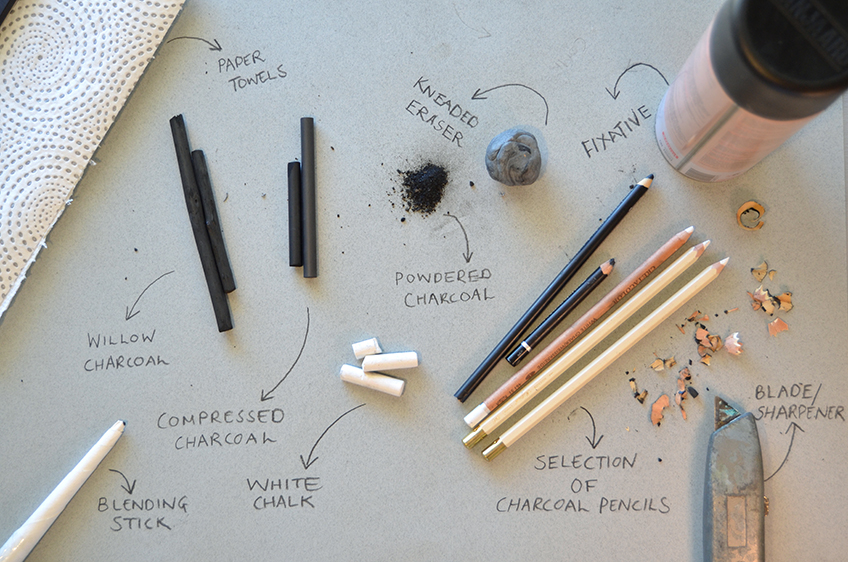
Basic Drawing Techniques
Once you have covered the basic materials and tools needed to start drawing, it is useful to review some of the basic techniques that can help you create texture depth and convey contrast in your drawing artworks. Below, we have listed the most common drawing techniques that most beginners learn in drawing.
- One of the most common drawing techniques is the hatching and cross-hatching method , which involves the creation of parallel lines to build up on value and shade areas in your drawing. Famous artists such as Leonardo da Vinci regularly used cross-hatching as a means to add depth and texture to his detailed drawings.
- In addition to this, Da Vinci also applied contour drawing , which is a technique that describes the process by which one outlines and defines the shapes of their subjects without lifting their pencil or looking at them. Contour drawing is said to promote careful observation and is a clever way to develop your memory of common shapes and forms.
- Stippling is another great technique that is used to create small dots or marks to build up the tone or texture of a drawing and give it a unique appearance. Stippling takes a great deal of patience and can also be seen in painterly works such as the works of George Seurat.
- One might also assume that the act of scribbling is just a random and nonsensical form of expression , however, scribbling is an expressive technique that can help you convey movement and energy in an artwork.
- In addition to these excellent techniques, artists who draw also use a technique known as blending , which involves gently rubbing charcoal or graphite to create smooth blends and transitions between tones and achieve a more softer and realistic aesthetic.
- To achieve a wider range of value in a monochromatic drawing, one can also employ the method of layering , which involves adding multiple layers of colored pencil or graphite to create depth.
- Scumbling is another technique that involves the use of a dry brush or pencil that is applied gently and lightly over a surface to create an atmospheric effect.
- One can also look to their smudging and blending tools to achieve smoother transitions and softer shading in areas that appear harsh. With these basic techniques in mind, you can be sure that you have a sufficient foundation with which to explore and develop your skills in drawing. By combining and experimenting with these different drawing techniques, you can also develop your knowledge of line, shape, and form.
Line, Shape, Form, and Perspective in Drawing
In drawing, it is vital to understand the various elements of art so that you can create intentional marks to convey your artistic objective. The element of line is a fundamental aspect that artists use to create marks on paper and canvas. This is the most basic form of visual communication and can vary in thickness, direction, length, and character to convey various emotions, construct shapes, or portray objects abstractly or realistically.
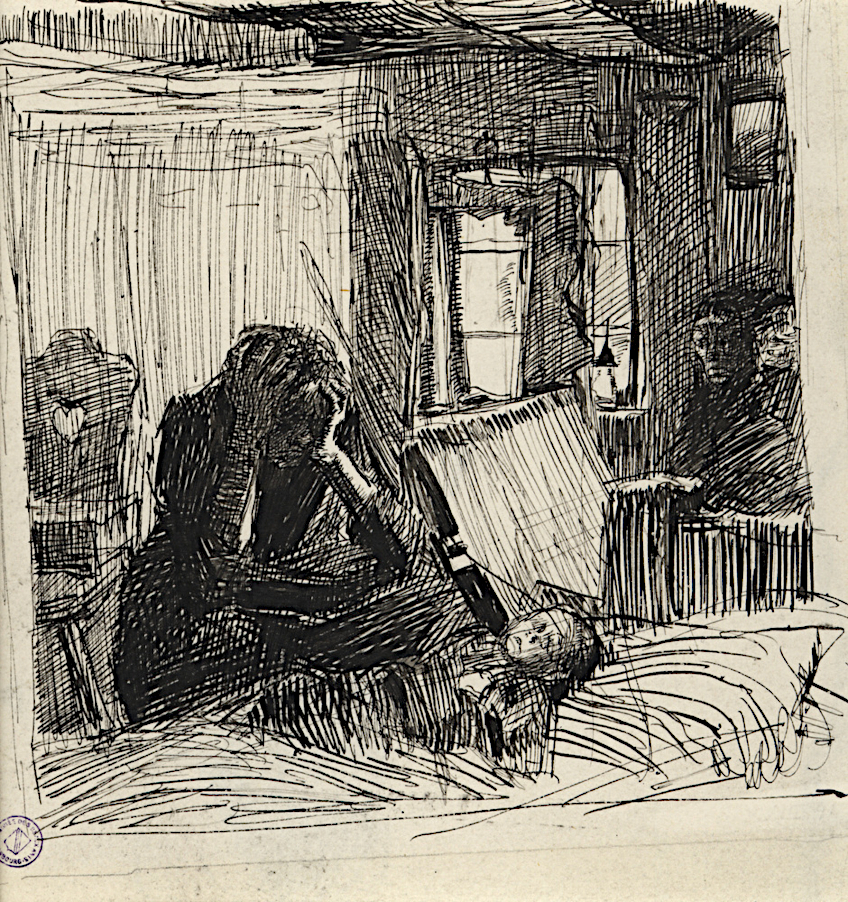
In drawing, lines can vary in form and can be drawn as curved, wavy, straight, or jagged. Lines also play an important role in defining the overall structure of your drawing and can add texture, depth, movement, or enhance the storytelling aspect of your drawing. Additionally, lines are used to outline shapes And represent the contours of an object. Drawing techniques such as cross-hatching and hatching involve the use of lines to build up tone, shade prominent areas, and create the illusion of form and depth.
The value and thickness of a line can also communicate different emotions and moods. Lines can be both bold and gentle, depending on how they are conveyed. Lines that appear fine indicate a sense of delicacy and fragility, while stronger, bolder lines indicate confidence and assertiveness.
Another important element in drawing is shape. Shape refers to the two-dimensional quality of a drawing created by enclosing a line and can be used to represent objects and forms in a composition. Shapes in drawing can be either geometric or organic, irregular, and abstract, and can encompass shapes such as triangles, squares, and circles. In drawing, shapes contribute significantly to the overall storytelling elements of the artwork, and when used effectively, can be used to create complex arrangements that help you identify the subjects and suggest volume.
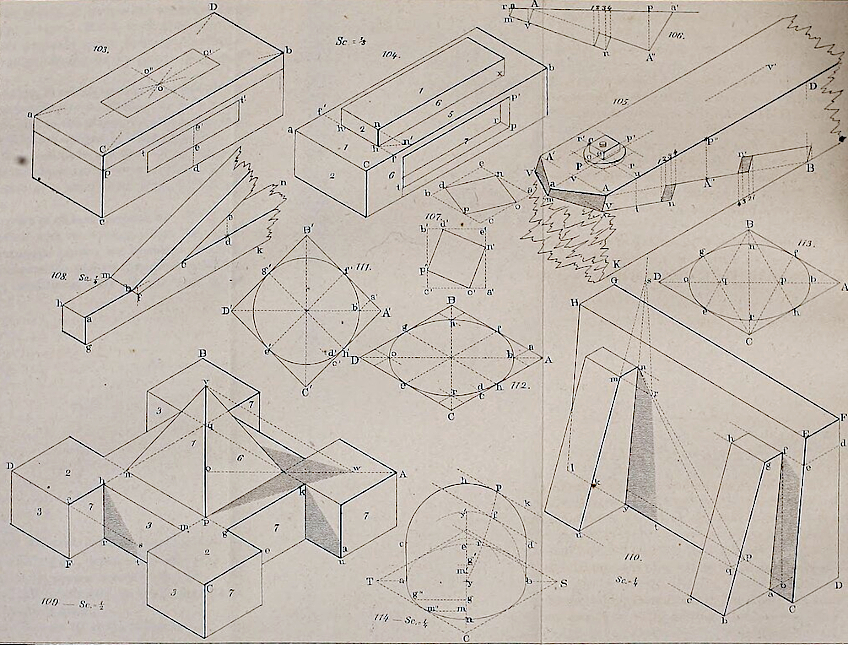
Another closely related element is form, which refers to the three-dimensional appearance of a subject in a drawing. Form extends beyond the understanding of lines and shapes and is a tool used to add volume and depth to an artwork. Artists can create the illusion of form by using various shading techniques to produce highlights and shadows and make the drawing appear more realistic. It is key to understand how the element of the form works to capture the way that subjects and objects interact with the environment. For example, light is an important subject that many artists leverage to create a sense of space and depth in their drawings.
Another way that drawing artists create a sense of depth and three-dimensionality is by employing various perspective devices. Perspective involves the representation of objects or scenes as they appear from a certain point of view.
Perspective techniques consider how objects and subjects recede into the distance. Techniques such as linear perspective utilize various vanishing points and converging lines from a scene to achieve this effect. Other types of perspective techniques such as one-point, two-point, and three-point perspectives are also used to represent spatial relationships. Perspective is thus an incredible and essential tool that can help you to create immersive drawings that also accurately represent the visual world from a subjective point of view.
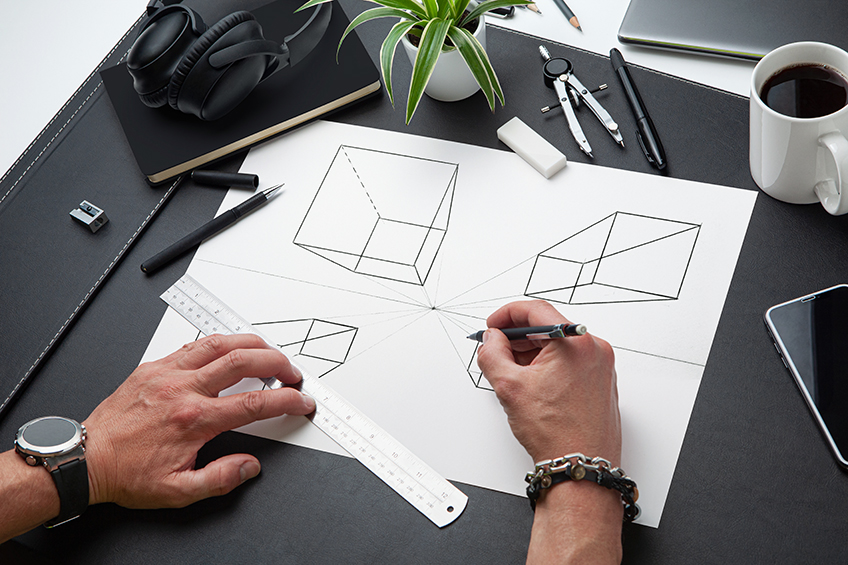

The Different Types of Drawing
Now that you understand the different tools, materials, and techniques required to start your practice in drawing, it is now time to review the different types of drawings that you can try your hand at.
- Sketching : This method refers to a type of freehand drawing technique that is defined by loose lines and quick outlines that are often used in the preliminary stages of the artistic project. Sketching is used to capture the basic elements of an object and serves as a rough drawing.
- Charcoal drawing : These are drawing artworks that are produced using charcoal sticks or charcoal pencils to create rich and expressive drawings. Charcoal drawings can appear to be very dramatic and textured, and offer a wide variety of tonal values.
- Pen and ink drawing : This type of drawing artwork involves the use of pens or ink and various tips, such as dip pens or fine liners, to create precise lines. These types of drawings are often used to portray comics or illustrations and are recognized as a type of technical drawing.
- Pencil drawing : These drawings are quite easy to identify and are versatile since they employ different grades of graphite pencils to illustrate the different textures and tones on a two-dimensional surface. Pencil drawings enable artists to create both light sketches and dark renderings, and offer a broader sense of control.
- Colored pencil drawing : These types of drawings involve the use of colored pencils to add a colorful and vibrant touch to a drawing. Colored pencil drawings offer artists the opportunity to add more Realism to their works and are a popular choice among illustrators.
The Benefits of Drawing
There are many benefits to learning the art of drawing and some of them may surprise you. The art of drawing has proved to significantly improve one’s motor skills and hand-eye coordination. Drawing also involves the act of observation, which helps artists to control their movements and translate what they see onto paper. Drawing is a medium that enhances one’s creativity and nurtures creative thinking.
Creative thinking has also been proven to foster intelligence and enable one to express their ideas and emotions in unique ways, such that the chances of success are increased in one’s adult years.
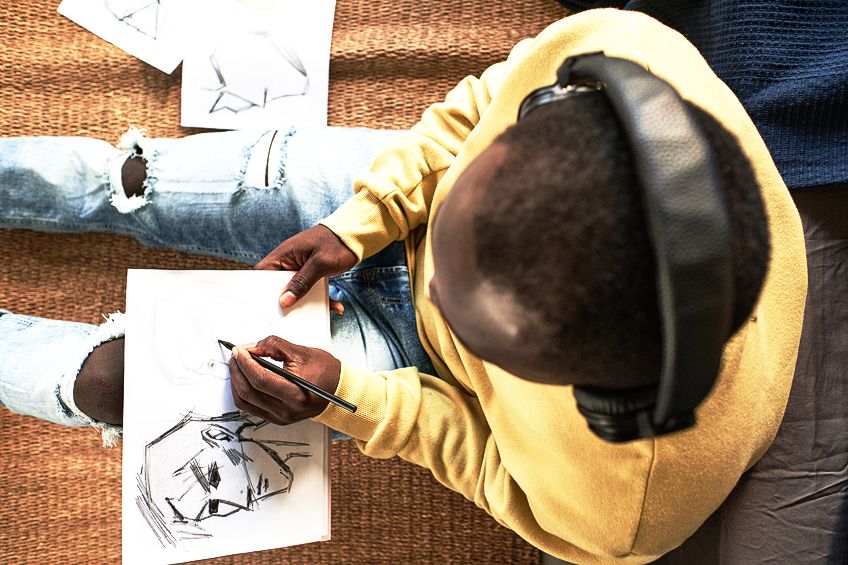
In addition to stimulating creativity and motor skills, drawing has also proven to relax and alleviate stress and anxiety. As a meditative activity, drawing can also enhance one’s memory retention and improve visual comprehension. As an art form and significant tool of self-expression, drawing has proved to be a remarkable medium to explore one’s personal growth and artistic aspirations, while refining their skills on a physiological level.
As a medium, drawing remains one of the most fundamental and diverse art practices that many artists rely on to develop their techniques and express their emotions. We cannot stress the importance of learning about drawing as a tool to enhance creativity, hand-eye coordination, and boost cognitive skills. By understanding the basic elements of drawing and the various techniques required to create drawing artworks, one can gain a thorough appreciation of the foundations of art that help us interpret the world around us.
Frequently Asked Questions
What is drawing.
Drawing is an art form that is used to create visual representations using various mark-making techniques. Drawing involves the use of shapes, lines, forms, and perspective techniques to convey observations and ideas, and has long been used as a form of communication and artistic expression across the disciplines of fine art, design, architecture, and illustration.
What Is the Most Famous Drawing Artwork?
Vitruvian Man (c. 1490) is considered to be the most famous drawing artwork, which was created by Leonardo da Vinci in pen and ink. The Vitruvian Man drawing illustrates the theory proposed by the Roman architect Vitruvius in the 1st century BCE that focuses on the theory of ideal human proportions. The drawing also contains notes penned in mirror script by Leonardo da Vinci.
What Are the Benefits of Drawing?
There are over several benefits when considering the art of drawing. Drawing has proven to enhance one’s hand-eye coordination, reduce stress, and improve creativity. Drawing also helps one to develop problem-solving skills and boosts memory. By practicing drawing, individuals can express their observations, thoughts, and emotions about the world.

Larissa Meyer is a 32-year-old mother from Michigan and creative spirit since childhood. Her passion for painting and drawing has led her to an education as an illustrator and a career as a freelance graphic designer. She has a Bachelor of Fine Arts in Illustration and a degree in Graphic Design. Larissa is a talented artist who is able to master a wide range of styles and techniques to bring her artistic vision to life. Her greatest passion is currently fluid painting and epoxy resin art. Larissa’s love for art and her knowledge and experience in illustration make her the perfect Creative Director for our fluid-painting.com team. She is the creative head of our team and shares her passion and knowledge with our community through articles and tutorials.
As a mother of a 2-year-old daughter, Larissa also understands the importance of fostering creativity in early childhood. She uses her experience and knowledge to help other parents inspire their children and develop their artistic skills as well.
Learn more about Larissa Meyer and about us .
Similar Posts
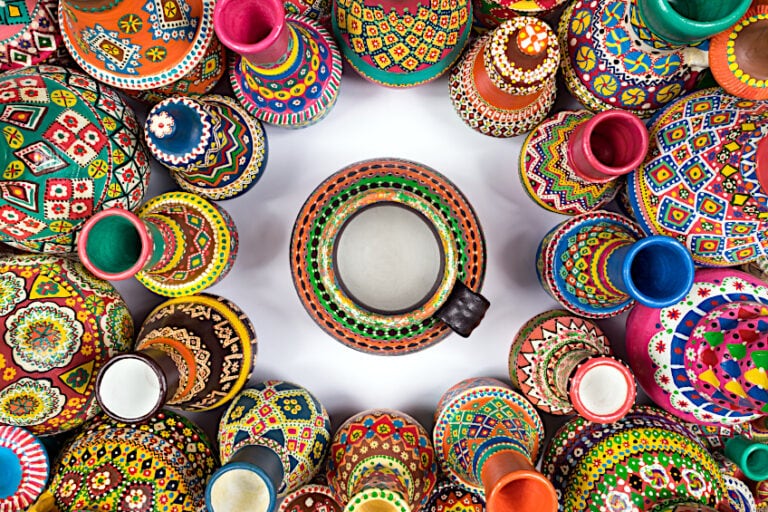
Pottery Painting Ideas – How to Personalize Your Ceramicware
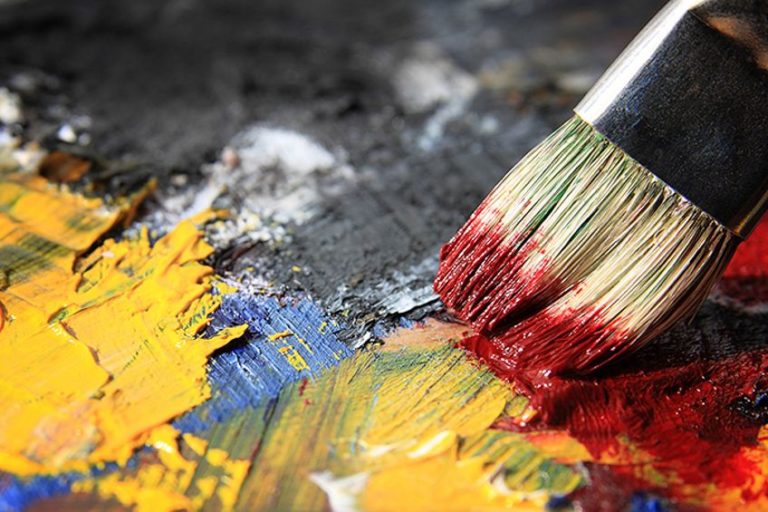
How Long Does Oil Paint Take to Dry? – Oil Paint Drying Times

Best Fabric Markers – Looking at the Best Pens to Write on Fabric
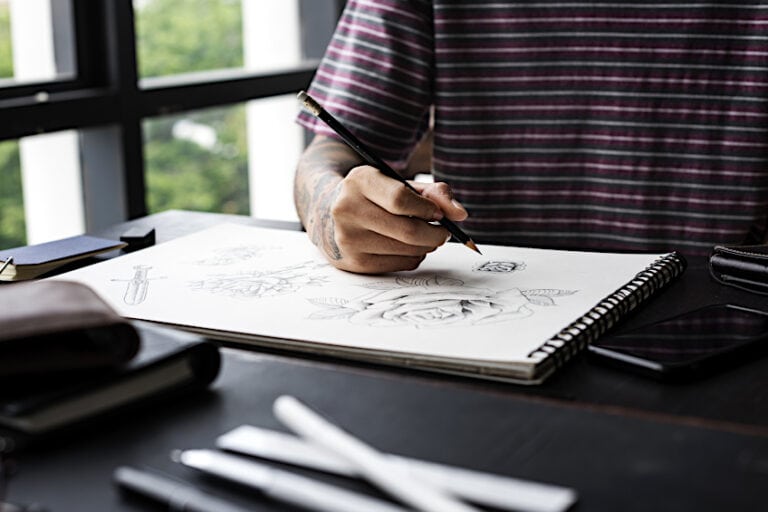
What Is Bristol Paper? – Versatile Paper for Arts and Crafts

Best Marker for Metal – Looking at the Best Pen to Write on Metal
Best Silicone Mold Kit – Find Your Ideal Mold Making Kit

COMMENTS
A term coined in the 20th century by the Hungarian art historian Johannes Wilde to describe certain drawings made by Michelangelo, for example those he gave as presents to various aristocratic young men. Presentation drawings were finished, non-utilitarian works of art, as opposed to preparatory drawings for a work in another medium.
A Brief History of Drawing with a Focus on the Renaissance, Baroque and Modern Masters. 2 of 25. Definition Drawing is a form of visual art that makes use of any number of drawing instruments to mark a two-dimensional medium. ...
Drawing, the art or technique of producing images on a surface, typically paper, by means of marks, usually of ink, graphite, or chalk. Drawing was recognized as its own finished form in the East early on, but it was regarded in the West as a preliminary step in the other arts until the 14th century.
Drawing - History, Techniques, Materials: As an artistic endeavour, drawing is almost as old as humankind. In an instrumental, subordinate role, it developed along with the other arts in antiquity and the Middle Ages. Whether preliminary sketches for mosaics and murals or architectural drawings and designs for statues and reliefs within the variegated artistic production of the Gothic medieval ...
After this presentation , you are required to write a one-page essay within the first week of school,,g which should include the following information: 1. Discuss why the art of drawing is the foundation to all other artistic disciplines 2. Discuss how drawing relates to the profession of painting and sculpture in Art History 3.
Definition In fine art, the term "drawing" may be defined as the linear realization of visual objects, concepts, emotions, and fantasies, including symbols and even abstract forms. Drawing is a graphic art which is characterized by an emphasis on form or shape, rather than mass and colour as in painting. Drawing is quite different from graphic ...
Egyptian drawings later evolved with balanced, colorful temple art. During the Roman era, technical drawings were used to illustrate buildings and engineering projects. Not until the 14th century did drawing emerge as an independent art form with the widespread availability of paper for sketching and experimenting.
7. Origin of Basic Drawing Materials Paper O O O Hemp wrapping paper, China, circa 100BC. O Stack of modern day copy paper The precursor to modern paper dates back to 2nd century BC in China. From China, the paper making process spread to the Middle East, then to medieval Europe in the 13th century, where the first waterpowered paper mills were built.
Presentation drawings are a very important part of public hearings and design reviews as a structure is studied by government and private agencies to determine its impact on the community. In residential architecture, presentation drawings are frequently used to show compliance with review board standards and to help advertise existing stock plans.
What is drawing, and how has drawing progressed as an art form in history? The history of drawing dates back thousands of years ago and was rooted in the evolution of human civilization. Drawing was one of the first forms of mark-making in early prehistoric cultures that were used to mark cave walls and record the experiences and messages of ...